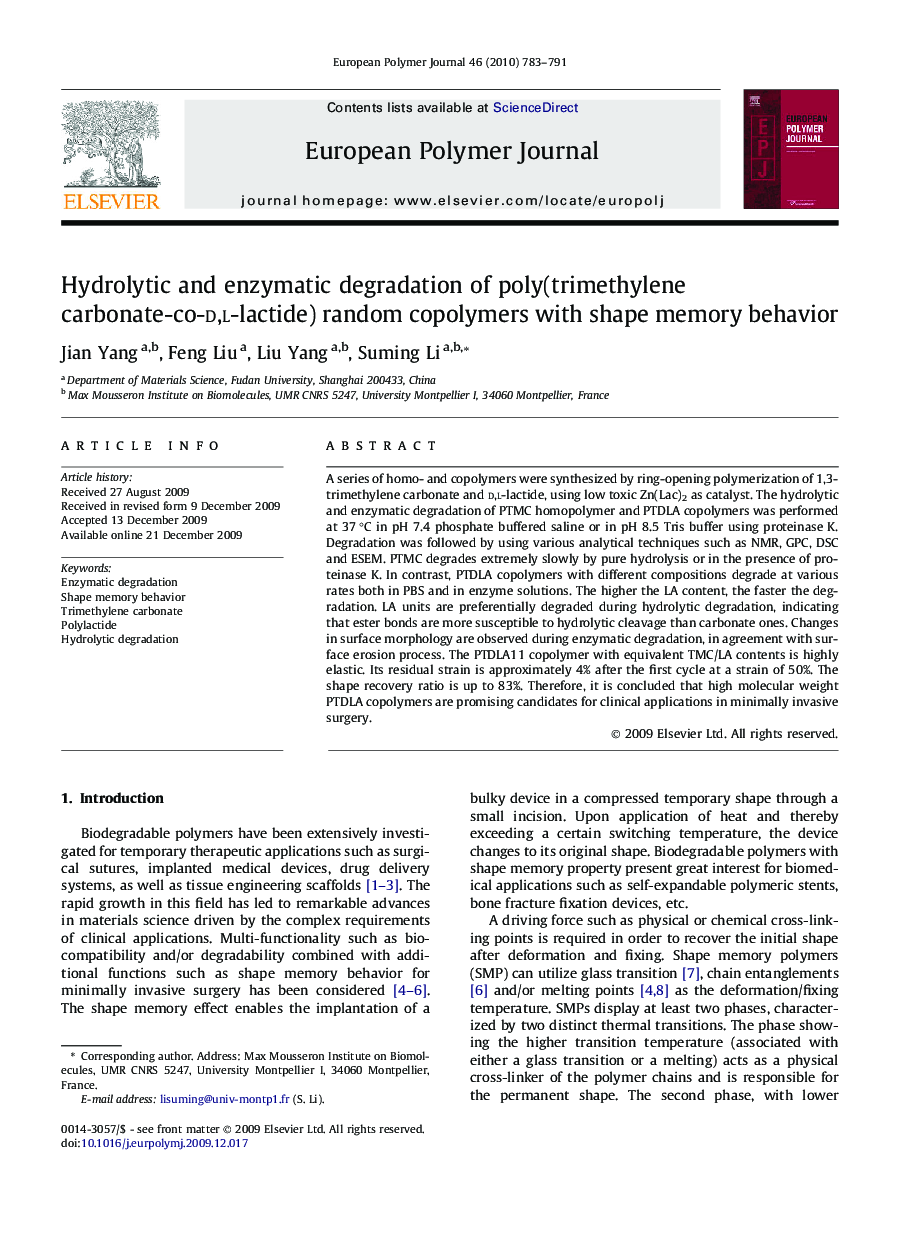| Article ID | Journal | Published Year | Pages | File Type |
|---|---|---|---|---|
| 1402533 | European Polymer Journal | 2010 | 9 Pages |
A series of homo- and copolymers were synthesized by ring-opening polymerization of 1,3-trimethylene carbonate and d,l-lactide, using low toxic Zn(Lac)2 as catalyst. The hydrolytic and enzymatic degradation of PTMC homopolymer and PTDLA copolymers was performed at 37 °C in pH 7.4 phosphate buffered saline or in pH 8.5 Tris buffer using proteinase K. Degradation was followed by using various analytical techniques such as NMR, GPC, DSC and ESEM. PTMC degrades extremely slowly by pure hydrolysis or in the presence of proteinase K. In contrast, PTDLA copolymers with different compositions degrade at various rates both in PBS and in enzyme solutions. The higher the LA content, the faster the degradation. LA units are preferentially degraded during hydrolytic degradation, indicating that ester bonds are more susceptible to hydrolytic cleavage than carbonate ones. Changes in surface morphology are observed during enzymatic degradation, in agreement with surface erosion process. The PTDLA11 copolymer with equivalent TMC/LA contents is highly elastic. Its residual strain is approximately 4% after the first cycle at a strain of 50%. The shape recovery ratio is up to 83%. Therefore, it is concluded that high molecular weight PTDLA copolymers are promising candidates for clinical applications in minimally invasive surgery.
Graphical abstractA typical shape memory experiment is illustrated in a 3D graph. The strip is first strained at 37 °C to 150%. After quenching down to 0 °C and the load withdrawn, the sample can recover its initial shape at 2 °C/min with a residual strain of 25%.Figure optionsDownload full-size imageDownload as PowerPoint slide
